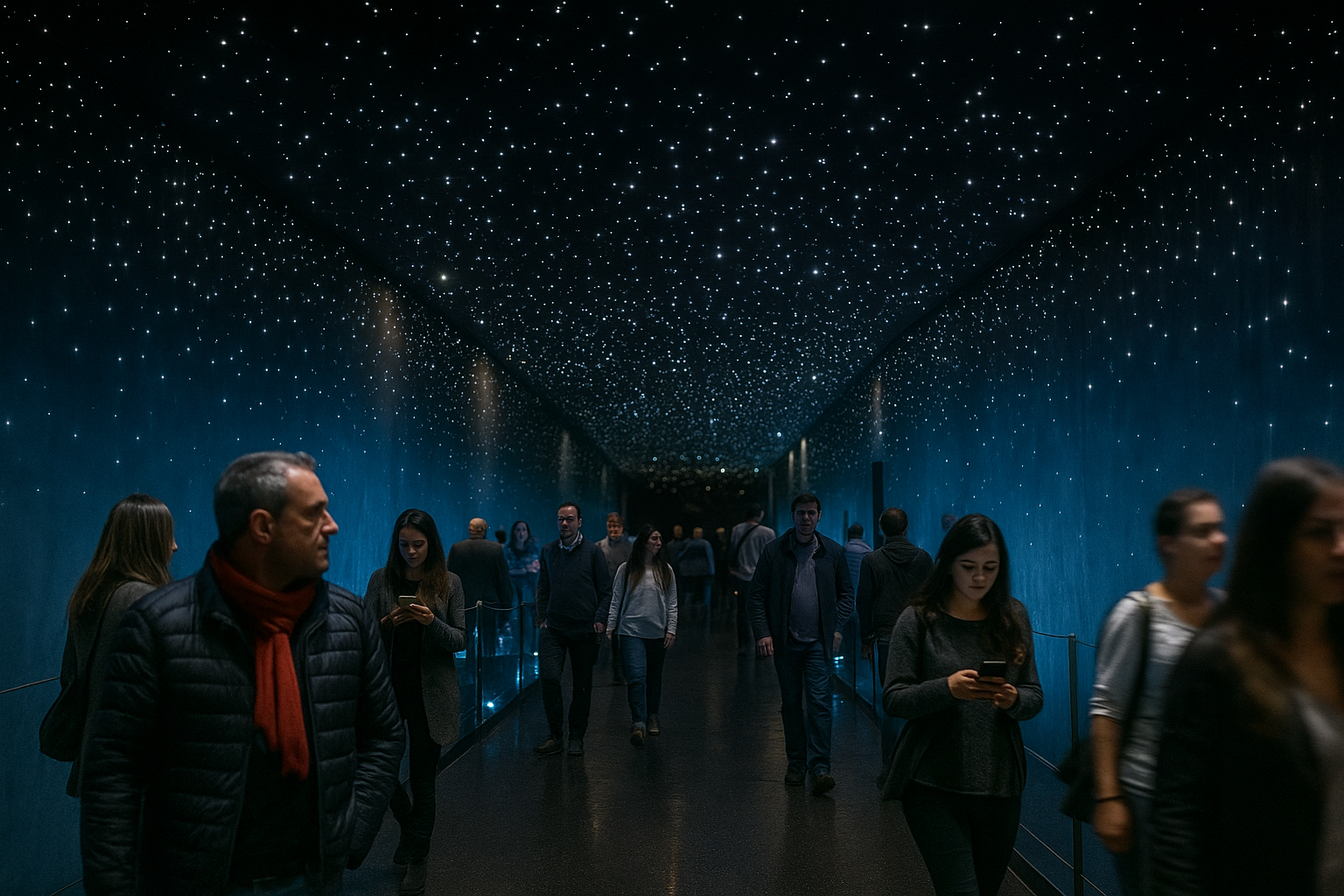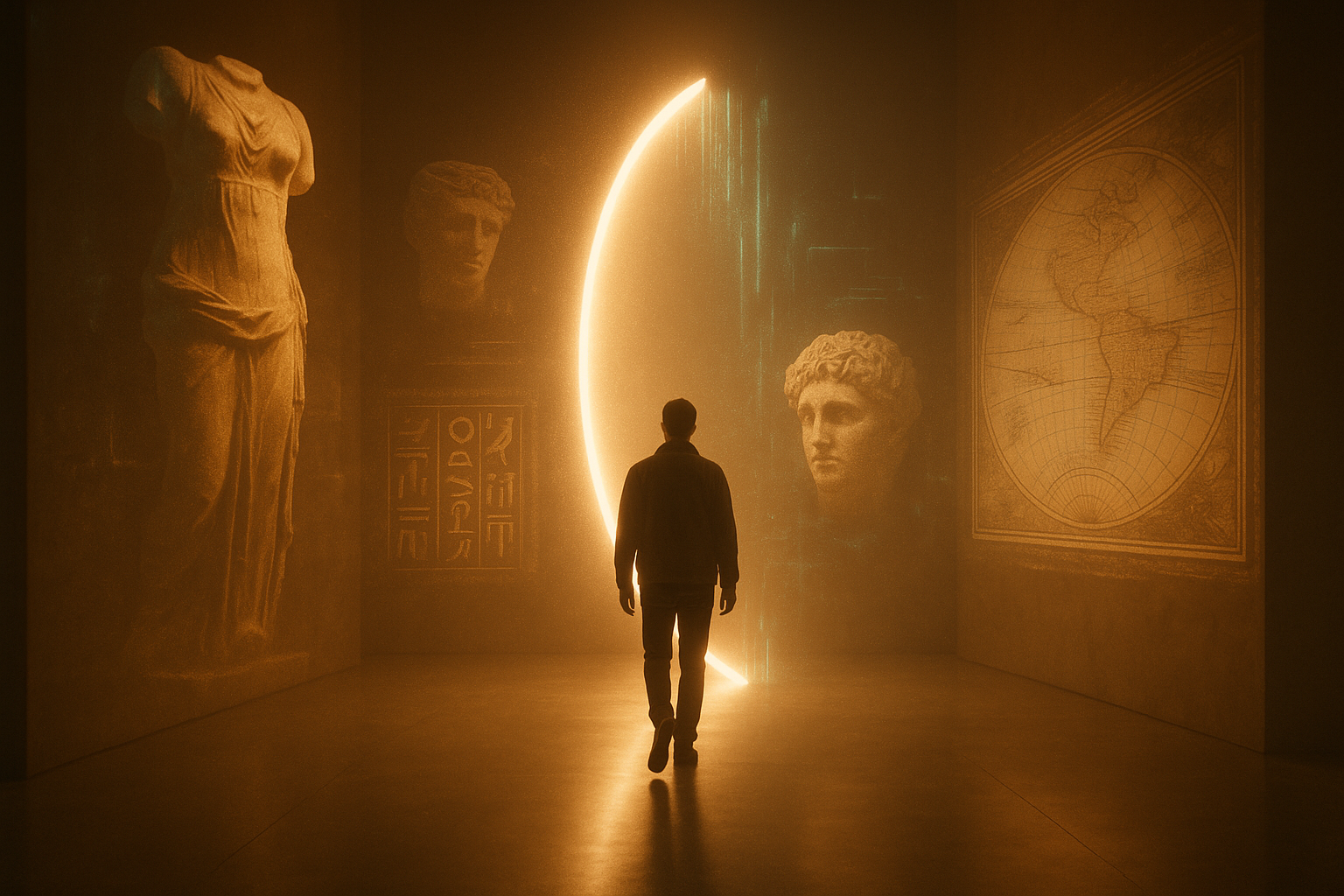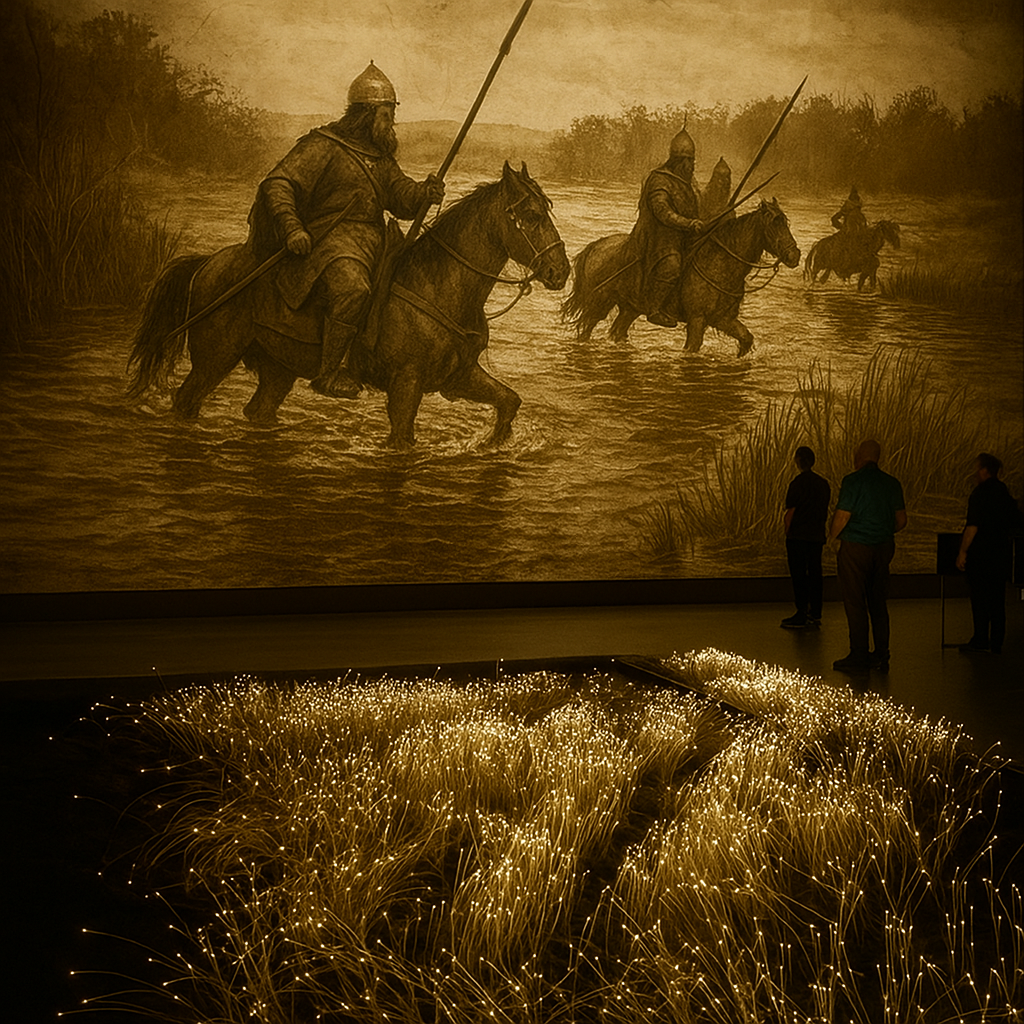There’s a common misconception that immersive exhibitions are competing with traditional museums, as if it’s a battle between the old and the new. But that couldn’t be further from the truth.
Immersive cultural experiences aren’t trying to replace museums. In fact, many of us come from the world of museums, archives, and education ourselves. What we’re building is a complementary approach: one that uses new tools, like projection, spatial sound, interactive storytelling, and multisensory design, to breathe life into history and make it more accessible for all types of visitors.
By collaborating with museums instead of operating outside or against them, immersive creators can support shared goals: broader public access, deeper emotional engagement, and innovative ways to keep cultural memory alive.
This isn’t about disruption for the sake of it. It’s about partnership, co-creation, and a shared belief that culture should be experienced, not just observed.
In this article, we explore how immersive companies and museums can work hand in hand and why that collaboration matters more than ever.
Museums Are Opening Up to Immersive Collaboration
Not long ago, immersive exhibitions and traditional museums seemed to exist in two separate worlds. One focused on quiet contemplation and physical objects; the other on projection, interactivity, and emotion-led storytelling. But things are changing.
According to The Art Newspaper, museums and galleries are now rethinking their approach. Instead of seeing immersive experiences as competition, many are embracing them as powerful new partners. These venues offer something museums increasingly value: the ability to tell interactive, emotionally engaging stories about cultural heritage.
This shift has gained momentum in the wake of the pandemic, when many museums began experimenting with digital tools to stay connected with audiences. Now, they’re going a step further, commissioning immersive experiences, partnering with digital creators, and layering interactive storytelling into their own exhibits.
It’s no longer about choosing one or the other. It’s about combining the trust and expertise of museums with the energy and innovation of immersive culture, to reach wider audiences, spark deeper emotions, and create something neither could do alone.
Technology Helps Museums Stay Relevant
Museums around the world are starting to embrace new tools to stay connected with today’s audiences. According to a recent MuseumNext report, 70% of museums plan to use technologies like artificial intelligence (AI) and augmented reality (AR) in their exhibits.
But this isn’t about flashy gadgets or gimmicks. It’s about using technology to make culture more engaging, inclusive, and accessible.
When thoughtfully designed, immersive tech can do more than entertain, it can enhance the stories museums are already telling. A painting comes to life with added context. A historic object becomes more meaningful when paired with an emotional narrative or interactive experience. These tools help visitors not just see the past, but feel it.
By combining their collections with smart, immersive layers, museums can connect with new audiences and offer deeper experiences to returning ones.
VR and AR Are Tools, Not Replacements
Virtual and augmented reality are changing how we experience culture, but they’re not here to replace real artifacts.
A recent Rock Paper Reality study explains how virtual reality can help museums stay culturally relevant, improve learning, and keep pace with visitor expectations. But the goal isn’t to take away what’s already there. It’s to add to it.
Think of VR and AR as powerful tools that offer new ways to connect with history and art. They might let you walk through a ruined temple as it once stood, or hear the voice of a historical figure as you stand in front of their portrait.
These immersive layers don’t compete with original objects, they complement them. They offer fresh perspectives on familiar stories and make culture more vivid, memorable, and meaningful for everyone.
Museums and Immersive AIs Can Co-Create Stories
Partnerships between museums and immersive companies are no longer rare, they’re redefining how stories are told.
Take the National Portrait Gallery, for example. It recently partnered with immersive art producers to take one of its flagship exhibitions on tour, reaching wider audiences without compromising its curatorial values The Times.
These kinds of collaborations show that immersive technology and museum expertise can work hand in hand. Museums bring historical depth, research, and accessibility standards. Immersive creators contribute new tools to make these stories emotionally resonant and physically engaging, from spatial audio to narrative AI.
The result? A new kind of cultural storytelling that honors the past while inviting the future.
Why We Partner with Museums
At Original Narratives, we don’t see museums as competitors, we see them as collaborators.
Museums have spent centuries curating, conserving, and contextualizing our shared heritage. Our role is to help amplify that work using modern tools that enhance storytelling without replacing substance. Here’s how that partnership works in practice:
| Core Principle | What It Really Means | Why It Matters |
|---|---|---|
| Mutual Respect | We bring immersive formats, museums bring historical expertise. Together, we co-create experiences that are both innovative and accurate. | This collaboration preserves depth while inviting broader, more diverse engagement. |
| Shared Goals | We’re not here to “wow” for the sake of it. We work to support each museum’s mission, helping people learn, reflect, and connect. | When immersive layers enrich rather than distract, visitors leave with greater understanding and emotional resonance. |
| Ethical Tech Use | We treat AI, AR, and VR as storytelling tools, not flashy replacements for real culture or physical collections. | That means innovation stays meaningful and aligned with the values of heritage preservation. |
| Expanded Outreach | Touring immersive experiences reflect what museums already do best: educate, inspire, and reach people where they are. | We help open doors, to new audiences, new revenue streams, and renewed cultural relevance. |
By partnering with museums, we’re not rewriting the story. We’re helping tell it in ways that resonate across generations and platforms.
Museums and immersive experiences aren’t on opposing sides, they’re part of the same story, just told with different tools.
The last six months have shown a clear direction: with the rise of AI, AR, and VR, as well as touring co-productions between cultural institutions and immersive creators, collaboration is no longer optional, it’s essential. When museums and immersive studios come together, they create something neither could achieve alone: experiences that are both rooted in truth and rich in emotion.
At Original Narratives, we believe in bridging tradition and innovation, not replacing one with the other. Because when we collaborate, we create cultural stories that speak louder, travel further, and last longer.
Have you visited a museum that partnered with an immersive experience or discovered a project where both worlds worked hand in hand?
Share your experience in the comments, or follow us to uncover more behind-the-scenes stories where history meets immersion.



